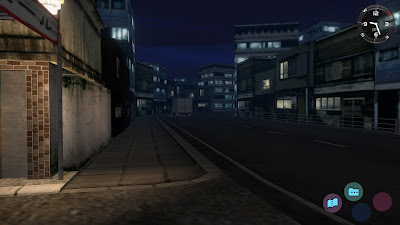I'm not totally sure if this game counts as obscure, but at the same time I'm thinking that it's going to mostly be arcade nerds that know about it, and even then, a lot of people will quickly write it off as a silly novelty game, and I think it deserves more than that. I'll also have to do something I haven't done on this blog in a long time: a disclaimer regarding this game's controls. The actual arcade version of Tetris Giant (also known as Tetris Dekaris) uses a projector dor its display, and is controlled by two gigantic joysticks at least the height of a human child. I, of course, have been emulating it on my laptop, and using a normal-sized USB Saturn controller. So the experiences I describe here are probably not exactly analogous to those of someone playing a real arcade machine.
I've also only ben playing single player, so I can't tell you about either the co-op or versus two player modes. Luckily, though, there are two single player modes, and both of them are a lot of fun. In both modes, there are some things that have been simplified to accomodate the unusual nature of the arcade version's controls: rather than the standard 10x20 block well, you instead have a 6x7 well, with the pieces being big and very brightly coloured. Furthermore, only when an entire piece crosses the line at the top does it count as a game over, partial pieces crossing the line are fine.
The first mode is line challenge mode, which is supposed to be the easier of the two modes, mainly because crossing the line doesn't end the game, it just erases the bottom few rows of blocks, so you're guaranteed at least two minutes of play. There's no scoring in this mode, and instead you're given two minutes to get as many lines as you can, with extra seconds added for clearing multiple lines at once. It's fun, but the lack of scores, and with it the lack of a high score table damages its long term appeal.
Luckily, the other mode, which tries to scare off timid players with a warning that it's for experts only, is score challenge. It's entirely about scoring as many points as you can before you get a game over or you reach two hundred lines. This mode does have a high score table, which features prominently as you play. It records the top one thousand scores, and it appears onscreen beside the well as a giant tower that you ascend as your score increases. The background fits the ascension theme too, starting at the bottom of the ocean, gradually rising up past skyscrapers, the sky itself, and up past the moon and into deep space. This mode is the meat of the game, and it's very addictive. A credit will only last me about five minutes, and I've still managed to play hours and hours of it.
Even (or maybe especially?) without the giant gimmick of the arcade cabinet, Tetris Giant has still easily come to be one of my favourite versions of Tetris, and I definitely recommend giving it a try yourself. It's unlikely, but I hope it someday gets a ported to handheld at some point, or at least a handheld Tetris game comes out that includes a mode that plays like it. One last thing to mention is that one essential thing you should do before you play (assuming you're playing via emulation) is to go into the service menu and change the music option from "instrumental" to "japanese songs". Trust me, this massively enhances an already great game.
























